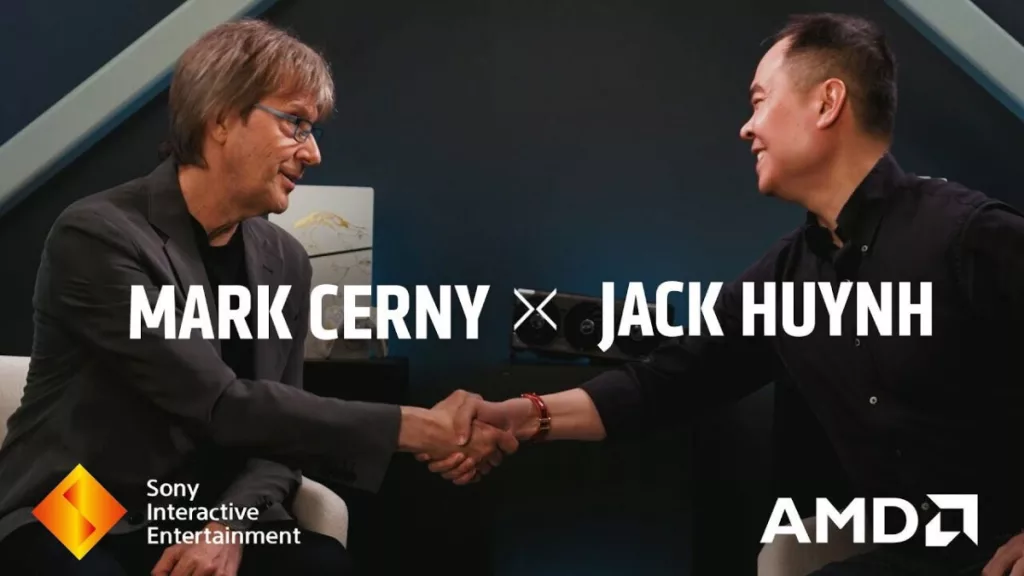
Mark Cerny and Jack Huynh discussed several topics, ranging from using Neural Arrays to Radiance Cores and more, for what could be introduced in a few years. The collaboration between AMD and Sony has a proven track record since the launch of the PlayStation 4 and has continued with the PlayStation 5. Just a few months ago, it was revealed that AMD is working on bringing its latest upscaling technology, AMD FSR4, to the current-gen console in 2026, and rumors have already been circulating that both Sony and Microsoft could feature UDNA/RNDA 5 Graphics in their next generation of consoles. In addition, the two announced their renewed partnership this summer, thus cementing a commitment to future hardware releases such as the PlayStation 6, so it should come as no surprise that new technologies are on the horizon.
“From Project Amethyst to a shared vision, I welcomed my good friend and fellow gamer
-Jack Huynh, Senior Vice President and General Manager of AMD’s Computing and Graphics Group
@cerny to Austin, where we reflected on the future that @AMD and @PlayStation
are shaping together, the future of gaming.”
“This isn’t just about technology. It’s about a partnership, a friendship, and a shared journey toward something extraordinary.”
-Jack Huynh, Senior Vice President and General Manager of AMD’s Computing and Graphics Group
Beginning with Neural Arrays, compute units will work together as a single AI engine to accelerate tasks involving machine learning models, processing large chunks of data, more features, and rendering. In a move similar to what NVIDIA has done with its RTX GPUs and RT cores, Radiance Cores are a new hardware addition to aid in ray tracing tasks that will be introduced in the PlayStation 6. Radiance Cores will build upon AMD FSR4 Redstone for more efficient ray tracing processing.
“There’s a siginificant speed boost that comes from putting the traversal logic in hardware, AND A FURTHER BOOST THAT COMES FROM HAVING THAT HARDWARE OPERATE INDEPENDENTLY FROM THE SHADER CORES.”
-Mark Cerny, Sony Interactive Entertainment Lead System Architect for PlayStation 5 and PlayStation 5 Pro
The last tech topic covered involves memory bandwidth limitations. From hi-res 4K textures to machine learning, plus ray tracing, bottleneck issues are a common occurrence due to memory bandwidth. Universal Compression is a solution being developed to help address this issue by compressing as much as possible so that only the most needed information is transferred by the GPU. Mark Cerny also hints that we could see this technology within a few years, perhaps indicating when the PlayStation 6 will launch.
“There’s a multitude of benefits from this, including lower power consumption, higher fidelity assests, and perhaps most importantly, the synergies that universal compression has with neural arrays and radiance cores as we work to deliver the best possible experience to gamers”
-Mark Cerny, Sony Interactive Entertainment Lead System Architect for PlayStation 5 and PlayStation 5 Pro
- Neural Arrays – instead of a bunch of compute units working separately, we’ve built a way for them to team up… sharing data and processing together like a single, focused AI engine. This changes the game for neural rendering: bigger ML models, less overhead, more efficiency, and far greater scalability as workloads grow.
- Radiance Cores – a new dedicated hardware block designed for unified light transport. It handles ray tracing and path tracing in real time, pushing lighting performance to a whole new level. This lets the GPU focus on what it does best: shading the scene. The result? A cleaner, faster, and more efficient pipeline, built for the next generation of ray-traced games.
- Universal Compression – a system that evaluates every piece of data headed to memory, not just textures, and compresses it wherever possible. Only the essential bytes are sent, dramatically reducing memory bandwidth usage. This means the GPU can deliver more detail, higher frame rates, and greater efficiency.
